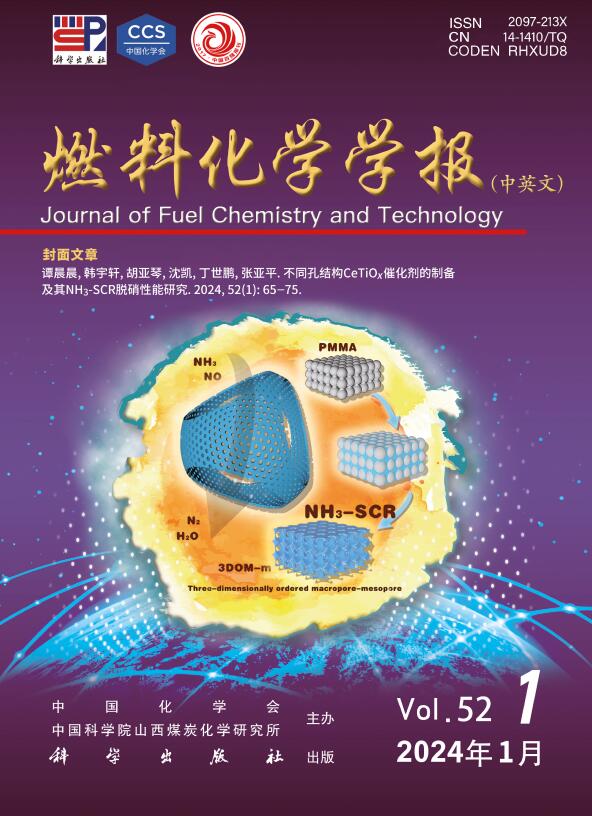不同TiO2表面极化子的密度泛函理论研究
Q3 Energy
引用次数: 0
摘要
极化子被广泛认为在材料的电荷传输和光催化性能中起着至关重要的作用,但是它们的形成机制和潜在的驱动因素仍然是一个有争议的问题。本研究探讨了TiO2不同晶型中极化子的形成及其与材料结构的关系。通过密度泛函理论计算和现场库仑相互作用校正(DFT + U),我们详细分析了锐钛矿型和金红石型TiO2的电子极化行为。我们重点研究了缺陷诱导和光激发过量电子在不同TiO2表面上的极化特性。结果表明,缺陷电子在锐钛矿型TiO2(101)表面形成小极化子,而在金红石型TiO2(110)表面形成大、小极化子(杂态极化子)。光激发电子能够在两种晶体类型的表面形成大小极化子。分析表明,极化子分布的差异主要是由晶体的内在性质决定的;锐钛矿和金红石型TiO2的结构和对称性差异导致其极化子行为不同。进一步研究表明,缺陷电子的极化行为还与钛原子周围电子轨道的排列有关,而光激发电子的极化主要是由晶格畸变促进的。这些发现阐明了不同类型极化子的形成机制,并有助于理解TiO2在不同领域的性能。本文章由计算机程序翻译,如有差异,请以英文原文为准。
A density functional theory study of polarons on different TiO2 surfaces
Polarons are widely considered to play a crucial role in the charge transport and photocatalytic performance of materials, but the mechanisms of their formation and the underlying driving factors remain a matter of controversy. This study delves into the formation of polarons in different crystalline forms of TiO2 and their connection with the materials’ structure. By employing density functional theory calculations with on-site Coulomb interaction correction (DFT + U), we provide a detailed analysis of the electronic polarization behavior in the anatase and rutile forms of TiO2. We focus on the polarization properties of defect-induced and photoexcited excess electrons on various TiO2 surfaces. The results reveal that the defect electrons can form small polarons on the anatase TiO2(101) surface, while on the rutile TiO2(110) surface, both small and large polarons (hybrid-state polarons) are formed. Photoexcited electrons are capable of forming both small and large polarons on the surfaces of both crystal types. The analysis indicates that the differences in polaron distribution are primarily determined by the intrinsic properties of the crystals; the structural and symmetry differences between anatase and rutile TiO2 lead to the distinct polaron behaviors. Further investigation suggests that the polarization behavior of defect electrons is also related to the arrangement of electron orbitals around the Ti atoms, while the polarization of photoexcited electrons is mainly facilitated by the lattice distortions. These findings elucidate the formation mechanisms of different types of polarons and may contribute to understanding the performance of TiO2 in different fields.
求助全文
通过发布文献求助,成功后即可免费获取论文全文。
去求助
来源期刊

燃料化学学报
Chemical Engineering-Chemical Engineering (all)
CiteScore
2.80
自引率
0.00%
发文量
5825
期刊介绍:
Journal of Fuel Chemistry and Technology (Ranliao Huaxue Xuebao) is a Chinese Academy of Sciences(CAS) journal started in 1956, sponsored by the Chinese Chemical Society and the Institute of Coal Chemistry, Chinese Academy of Sciences(CAS). The journal is published bimonthly by Science Press in China and widely distributed in about 20 countries. Journal of Fuel Chemistry and Technology publishes reports of both basic and applied research in the chemistry and chemical engineering of many energy sources, including that involved in the nature, processing and utilization of coal, petroleum, oil shale, natural gas, biomass and synfuels, as well as related subjects of increasing interest such as C1 chemistry, pollutions control and new catalytic materials. Types of publications include original research articles, short communications, research notes and reviews. Both domestic and international contributors are welcome. Manuscripts written in Chinese or English will be accepted. Additional English titles, abstracts and key words should be included in Chinese manuscripts. All manuscripts are subject to critical review by the editorial committee, which is composed of about 10 foreign and 50 Chinese experts in fuel science. Journal of Fuel Chemistry and Technology has been a source of primary research work in fuel chemistry as a Chinese core scientific periodical.
 求助内容:
求助内容: 应助结果提醒方式:
应助结果提醒方式:


